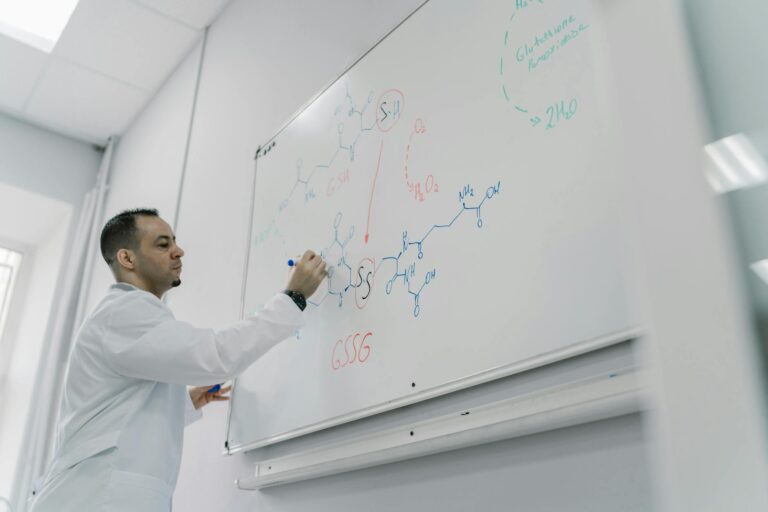Intentional Learning Strategies for Lifelong Success

Intentional learning is a powerful approach to self-improvement, helping individuals acquire knowledge and skills with a clear purpose. Whether you’re a student striving for better grades, a professional seeking to grow at work, or a parent fostering intentional learning in early childhood, understanding how to structure your efforts can lead to significant achievements. With practical study tips and note-taking methods like the Cornell Notes system, you can set a strong foundation for effective learning. Let’s dive into strategies for embracing intentional learning as a lifelong habit.
What Is Intentional Learning?
It is the process of actively seeking out information and skills with a defined goal. Unlike incidental learning, which happens accidentally, intentional learning involves deliberate effort. It requires focus, planning, and reflection to ensure the learning process aligns with specific objectives.
Learning intentionally can be defined as:
- Setting clear goals.
- Engaging in purposeful activities.
- Reflecting on progress and outcomes.
For example, a student using study tips from our School Hacks article might outline a clear goal for improving test scores. The deliberate use of tools like organized notes supports this objective, making the learning process effective and intentional.

What Is the Difference Between Incidental and Intentional Learning?
The distinction between intentional learning and incidental learning lies in purpose. Incidental learning occurs without conscious effort, like picking up new words during a conversation. Intentional learning, on the other hand, requires deliberate planning.
A similarity between incidental and intentional learning is that both contribute to knowledge acquisition. For instance, while a child might accidentally learn about colors through play (incidental), intentional activities like structured games can reinforce this knowledge.
Why Learning Matters for Lifelong Success
Learning intentionally equips individuals with skills that extend far beyond formal education. In the workplace, for example, intentional learning fosters adaptability and problem-solving. At home, it nurtures curiosity in children, setting them up for future success.
Consider the importance of an environment conducive to learning:
- It creates structure and removes distractions.
- It provides resources that support focused learning.
- It encourages reflective practices to measure progress.
Whether you’re learning to learn as a student or pursuing professional growth, being intentional enhances outcomes.

Learning Strategies for Different Stages of Life
1. Early Childhood
Intentional learning in early childhood sets the stage for lifelong curiosity. Activities such as structured play, storytelling, and interactive games help children engage with purpose.
Tips for Parents:
- Use visual aids and hands-on tools.
- Encourage questions and exploration.
- Create a routine that includes learning time.
2. Learning at School
Students can thrive by using intentional methods to organize their studies. The Cornell Notes method is an excellent example of an effective, structured approach to note-taking.
Tips for Students:
- Break down topics into manageable sections.
- Set specific, measurable learning goals.
- Review and reflect on notes regularly.
3. Learning at Work
Learning to learn doesn’t stop after school. Professionals can grow by setting goals for skill development and seeking out mentorship opportunities.
Strategies for Professionals:
- Identify skills that align with career goals.
- Engage in professional development courses.
- Reflect on feedback to refine abilities.

Creating an Intentional Learning Environment
An environment conducive to learning enhances focus and productivity. It can be as simple as organizing a quiet space at home or leveraging technology to support learning.
Key Elements of an Effective Learning Environment:
- Minimal distractions (e.g., no phone or TV).
- Adequate lighting and comfortable seating.
- Access to tools and resources such as books, apps, or online courses.
Examples to Inspire You
1. At Home: A parent helps their child develop a reading habit by setting aside 20 minutes daily for books and reflection.
2. At Work: A professional takes a course on project management and applies new techniques to streamline workflows.
3. For Personal Growth: A hobbyist sets a goal to learn the guitar by practicing specific chords for 15 minutes each day.
These examples show how intentionality transforms learning into a structured, achievable process.

How to Build Learning Habits
Developing habits is crucial for maintaining an intentional approach to learning. Here’s how:
- Set Clear Goals
Start with specific objectives. For example, aim to learn five new words daily in a foreign language. - Schedule Learning Time
Dedicate consistent time each day for learning. - Reflect Regularly
Assess what you’ve learned and identify areas for improvement. - Stay Motivated
Track progress and celebrate small wins to maintain enthusiasm.
Frequently Asked Questions
Q: What is an intentional learning example?
A: Setting a goal to learn coding and using online tutorials daily is an example of this.
Q: How can I promote intentional learning at work?
A: Encourage employees to set learning goals and provide resources like workshops or online courses.
Q: What is the role of reflection in intentional learning?
A: Reflection allows learners to evaluate their progress and adjust strategies for better outcomes.
Conclusion
Learning is a lifelong skill that empowers individuals to achieve their goals and adapt to new challenges. By setting clear objectives, creating supportive environments, and using effective strategies, anyone can make learning a purposeful and rewarding journey.
Explore more practical tips and methods in related articles like School Hacks and Cornell Notes Example to elevate your learning strategies today.





